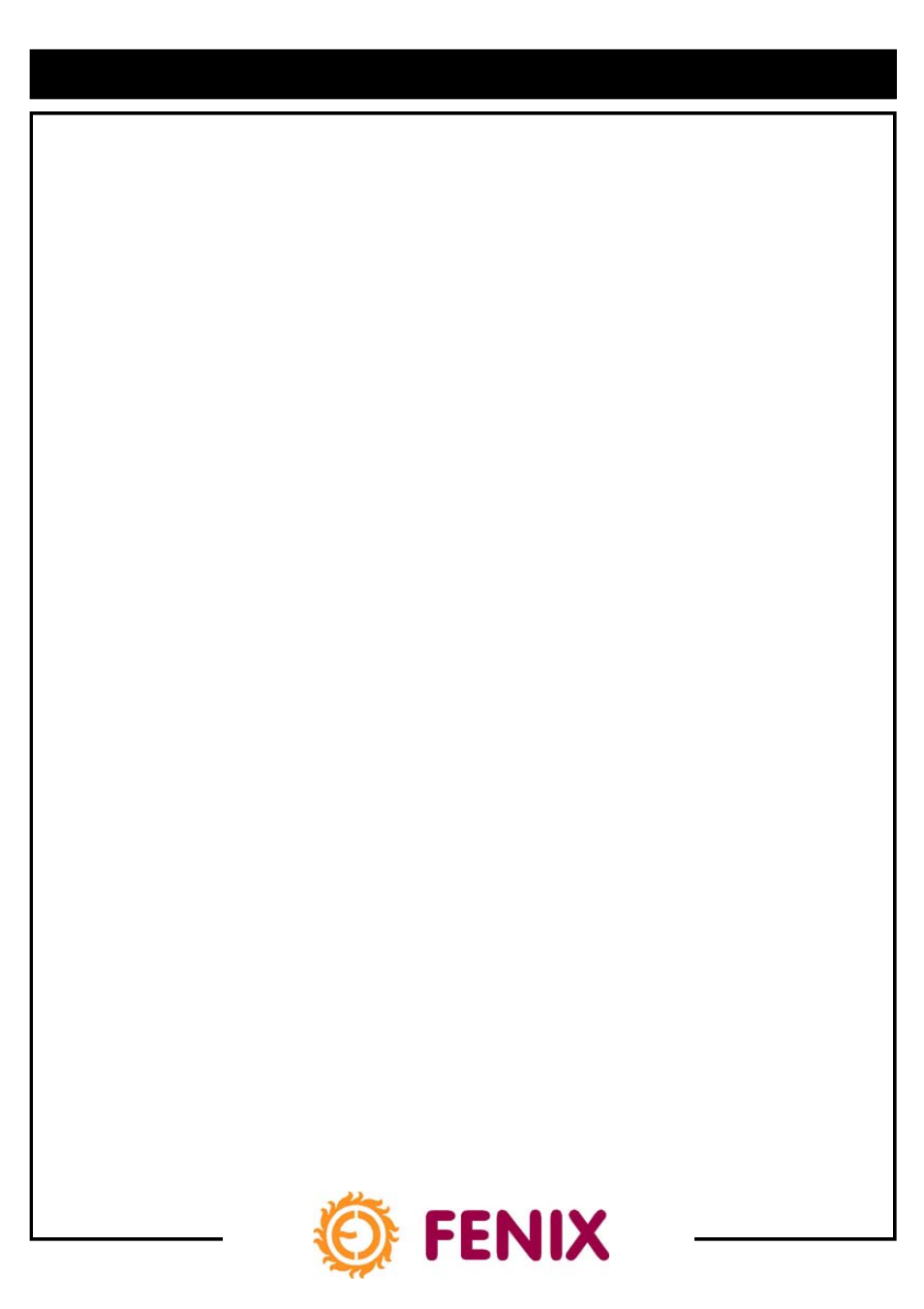Fenix LSDTS 8 Uživatelská příručka
Lsdts 8, 12, Installation manual / návod na instalaci, Cabel heating mats/ podlahové topné pohože

INSTALLATION MANUAL / NÁVOD NA INSTALACI
N205/R03 (13.08.15)
LSDTS 8, 12
CABEL HEATING MATS/ PODLAHOVÉ TOPNÉ POHOŽE
•
Topné rohože smí být provozovány jen jako součást stavebních
konstrukcí. Fixace topného kabelu ke skelné tkanině lepením je
považována jen za dočasnou fixaci, topná rohož slouží pro instalaci
v mokrých stavebních procesech (beton, lepící a „samonivelační“
tmely na cementové bázi splňující požadavky na tepelnou flexibilitu
— při aplikaci je nutné řídit se návodem výrobce) a při provozu
musí být s těmito hmotami v dokonalém kontaktu bez vzducho-
vých mezer.
•
Rohož může být upravována výhradně dle obrázků 1–3, v žádném
případě nesmí být krácena. Kráceny dle potřeby mohou být pouze
studené připojovací konce. Spojka spojující studený konec a topný
okruh nesmí být instalována v ohybu. Topné kabely topných rohoží
se nesmějí dotýkat, ani křížit, vzdálenost topných kabelů od sebe je
min. 30mm. Jestliže je topný kabel nebo napájecí přívod poškozen,
musí být nahrazen nebo opraven výrobcem, jeho servisním techni-
kem nebo podobně kvalifikovanou osobou, aby se zabránilo vzniku
nebezpečné situace. Kabely neinstalujte pomocí hřebíků a vrutů!
•
Při instalaci musí být dodržen požadavek, že průměr ohybu kabelu
smí být minimálně osminásobek jeho průměru.
•
Topná rohož musí být napájena přes proudový chránič se jmenovi-
tým vybavovacím proudem I
Δ
n
≤
30mA, mimo rohože s ochranný
opletením, které jsou instalovány v suchém prostředí. Doporučuje-
me každý topný celek / okruh topení vybavit samostatným proudo-
vým chráničem.
•
Topnou rohož z hlediska bezpečnosti je zakázáno instalovat do
stěn.
•
Topná rohož může být skladována při teplotě +10°C až +35°C
a instalována při teplotě +5 až +30°C a při provozu nesmí být
vystavována teplotám vyšším než 70°C.
•
Při vybalování, manipulaci a instalaci rohože dbejte zvýšené
opatrnost, aby nedošlu k mechanickému poškození rohože —
zkontrolujte prohlídkou topného kabelu před zalitím stavební
hmotou.
•
Heating mats may be operated only as a part of building structures.
Fixing the heating cable to the fiberglass fabric during manufacture by
gluing is regarded to be only a temporary bond. The heating mat is
intended for installation in wet construction processes (concrete, adhesive
and “self-leveling” sealing materials based on cement fulfilling thermal
flexibility requirements – during application it is necessary to follow the
manufacturer’s instructions). When in use, the heating mat must be in full
contact with these materials and free from air bubbles.
•
The mat may be adjusted only as shown in pictures 1 – 3, and in no case
may it be shortened. You may shorten only the cold connection ends, as
required. The connection joining the cold end and the heating cable may
not be installed in a bend. The heating cables of the heating mats may
neither touch nor cross one another. The minimum distance between the
cables is 30 mm. If the heating or power supply cables are damaged,
they must be replaced or repaired by the manufacturer, its service techni-
cian or a similarly qualified person in order to prevent a dangerous situa-
tion from arising. Do not use nails or screws to install the cables!
•
When installing the cables, the diameter of a bend in the cable must be at
least eight times greater than the cable’s diameter.
•
The heating cable must be supplied with electricity by means of a residual
current circuit breaker with rated actuating current of IΔn≤30mA, except
for those mats with protective braiding that are installed in a dry environ-
ment. We recommend that each heating unit/circuit be equipped with a
separate residual current device.
•
For safety reasons, heating mats may not be installed in walls.
•
The heating mats may be stored at temperatures from +10°C to +35°C
and installed at temperatures from +5°C to +30°C. When in operation,
they may not be exposed to temperatures exceeding 70°C.
•
During removal from packaging , manipulation and installation of the mat
take special care to avoid mechanical damage to the mat – check the
heating cable visually before pouring the building material
.